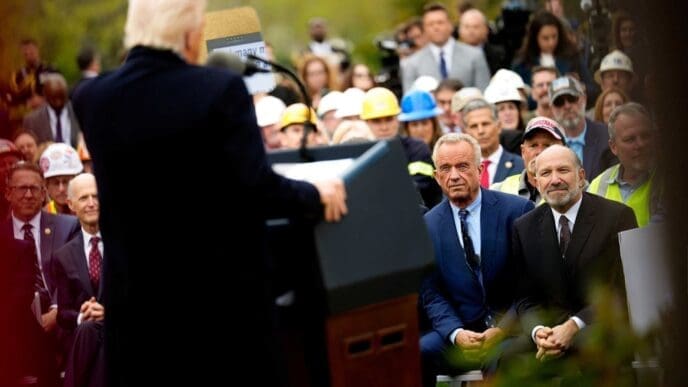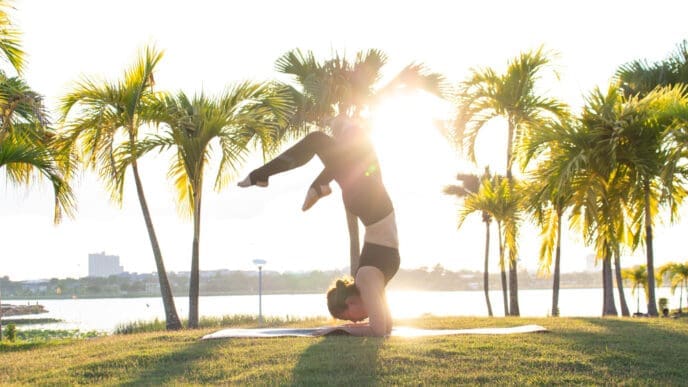In a city as dynamic and transient as Miami, where social circles can shift as quickly as the tides, maintaining deep, long-lasting friendships can feel like a significant challenge. For adults navigating demanding careers, new life stages, and the city’s famously fast-paced culture, once-close bonds can drift apart, leaving a void that impacts overall well-being. The good news, however, is that reviving these dormant friendships is not only possible but is a profoundly rewarding act for your mental health. By understanding the unique social landscape of South Florida and taking intentional, low-pressure steps, you can successfully rekindle old connections and rebuild a vital support system.
Why Friendships Fade, Especially in Miami
The fading of a friendship is rarely a dramatic event; more often, it is a slow, quiet drift. Life’s natural progressions—new jobs, romantic relationships, marriage, children, or a simple change in routine—are the most common culprits, creating distance where there was once daily contact. These universal challenges are often amplified in a city like Miami.
The reasons are multifaceted. People move here for a job, for the weather, or for a temporary life chapter, and then they move away. This constant influx and outflow of residents creates a sense of impermanence that can make investing in deep roots feel precarious.
The “Miami Factor”: A Unique Social Landscape
Miami’s culture itself presents a unique set of hurdles. The city’s “work hard, play hard” ethos often prioritizes high-energy, surface-level socializing over the quiet, consistent interactions that build deep intimacy. A social calendar packed with glamorous events, bustling restaurants, and vibrant nightlife can ironically lead to a feeling of profound loneliness.
Furthermore, the city’s geographical sprawl is a real logistical barrier. A friend who moves from Brickell to Fort Lauderdale, or from South Beach to Coral Gables, might as well have moved to a different state in terms of spontaneous get-togethers. The effort required to bridge these distances demands a level of intentionality that busy lives don’t always afford.
The Psychology of Reconnection: Overcoming the Hurdles
The biggest obstacle to rekindling a friendship is almost always internal. The fear of rejection looms large, creating a narrative of self-doubt: What if they don’t want to hear from me? What if it’s too awkward? What if they’ve moved on and I’m just a reminder of a past they’ve left behind?
These anxieties are rooted in a common cognitive bias. Research in social psychology has identified what is known as the “liking gap,” where people consistently underestimate how much another person likes them and enjoys their company after an interaction. When you reach out to an old friend, you are likely underestimating how happy they will be to hear from you.
It’s Not Just You: The Universal Fear of Reaching Out
It is crucial to understand that this fear is universal. The friend you are hesitant to contact may be having the exact same thoughts, wishing you would make the first move. They too may feel the awkwardness of the elapsed time and be unsure how to bridge the gap.
By taking that first step, you are breaking a cycle of mutual hesitation. You are offering a simple, low-stakes invitation that gives the other person an easy opportunity to reciprocate. More often than not, the imagined awkwardness is far worse than the reality of the reconnection.
A Practical Guide to Rekindling Friendships in the 305
Reviving a friendship doesn’t require a grand gesture. It requires a series of small, thoughtful, and intentional actions. Here is a step-by-step guide tailored to Miami’s unique environment.
Step 1: The Initial Outreach
The first message should be simple, warm, and low-pressure. A text message or a direct message on social media is often better than a phone call, as it gives the person space to respond on their own time. The goal is to open a door, not to force them through it.
Anchor your message in a shared memory or a simple, genuine thought. For example: “Hey [Friend’s Name], I was just walking past that coffee shop in the Grove and it made me think of our old study sessions. It’s been too long! I’d love to catch up soon if you’re around. Hope you’re doing well!”
Another excellent approach is even simpler: “Hey [Friend’s Name], you crossed my mind today and I realized how long it’s been. I’d love to hear how you’re doing and catch up properly. Let me know if you’re free for a coffee sometime in the next few weeks.” This approach is honest, direct, and places no immediate obligation on them.
Step 2: Choosing the Right Venue and Activity
Once your friend responds positively, the next step is planning the get-together. In a city known for its loud and sceney spots, choosing the right environment is critical for a meaningful conversation. Avoid the pulsating music of a South Beach club or a packed, noisy restaurant in Brickell for this first reunion.
Low-Key & Conversation-Friendly Ideas
Opt for a setting that facilitates easy conversation. Suggest grabbing a cortadito in Little Havana or a coffee at a quiet café in Coconut Grove or Sunset Harbour. A leisurely walk along the Venetian Causeway or through South Pointe Park offers a beautiful backdrop and removes the pressure of face-to-face, uninterrupted eye contact, which can make conversation flow more naturally.
Museums are another fantastic option. A visit to the Pérez Art Museum Miami (PAMM) or The Bass allows for moments of silence and shared observation, with the art itself serving as a natural conversation starter. It provides a shared experience that isn’t solely dependent on recounting the last several years of your lives.
Activity-Based Reconnections
Sometimes, doing an activity side-by-side is less intimidating than a formal sit-down. Suggest something based on a shared past interest or a new, low-stress activity. This could be a morning yoga class, renting paddleboards in Key Biscayne, or browsing the stalls at the Coral Gables Farmers’ Market on a Saturday.
The activity provides a focus, and the conversation can happen more organically around it. It rebuilds a sense of shared experience in the present, which is essential for moving the friendship forward.
Step 3: The Catch-Up Conversation
During the meeting, the focus should be on genuine curiosity and active listening. Ask open-ended questions that go beyond “What have you been up to?” Try questions like, “What’s been bringing you joy lately?” or “What’s been the most surprising thing about your work/life these days?”
Acknowledge the time that has passed with a simple “It is so good to see you, it really has been too long,” but avoid dwelling on it or assigning blame. The goal is to look forward. Be present, put your phone away, and give them your undivided attention. This simple act of presence is one of the most powerful ways to show someone you value them.
Navigating Awkwardness and Potential Rejection
It is important to enter this process with realistic expectations. Not every attempt to reconnect will result in the revival of a close friendship, and that is perfectly okay.
If the Response is Lukewarm or Non-Existent
If your message goes unanswered or you receive a polite but non-committal response, try not to take it personally. The other person’s life is a black box to you; they may be dealing with a personal crisis, overwhelming stress, or social anxiety of their own. Their lack of response is often not a reflection of you or the past friendship.
Give it some time. If you feel it’s appropriate, you can send one gentle follow-up a few weeks later. If there’s still no response, it’s best to gracefully let it go. You made a kind and courageous effort, and that in itself is a success.
If You’ve Both Changed
Sometimes you will meet up, only to discover that you have both changed significantly. The old chemistry may not be there, and your lives may have diverged onto paths that no longer align. This is not a failure.
Appreciate the meeting for what it was: a chance to gain closure and wish an old friend well. It is better to have an amicable understanding that your season of close friendship has passed than to force a connection that no longer fits. This clarity allows you to focus your energy on the relationships that do nourish you in the present.
The Health Benefits of Rebuilding Your Social Fabric
The effort to rekindle friendships is far more than a social nicety; it is a critical investment in your long-term health. A robust body of scientific evidence shows that strong social connections are a powerful predictor of longevity, mental resilience, and physical health.
Meaningful friendships buffer the effects of stress, reduce the risk of depression and anxiety, and promote a sense of belonging and purpose. In a city like Miami, where it can be easy to feel like a small fish in a very large, glittering pond, these authentic connections are the anchors that provide stability and genuine happiness. Remember, the goal is quality over quantity. A few revived, deep friendships are infinitely more valuable than a hundred superficial acquaintances.
Conclusion: Building a More Connected Future
Reviving a friendship that has faded in the whirlwind of Miami life is an act of courage and intention. It requires moving past the fear of rejection, sending that simple text, and choosing a quiet coffee over a loud club. By taking these small, deliberate steps, you can breathe new life into bonds that once brought you joy and support.
These re-established connections do more than just fill your social calendar; they rebuild the essential human fabric of your life. They ground you, support you, and remind you that even in the most fast-paced of cities, deep and lasting bonds are not only possible, but are worth every ounce of effort.













